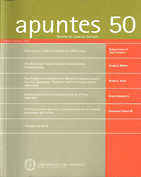El problema de la interferencia en comunicaciones inalámbricas: la "solución" regulatoria de EE.UU. y la alternativa de derechos de propiedad

View/
Descargar
(text/html: 172bytes)
(text/html: 172bytes)
Date
2002-01Author(s)
Viani, Bruno E.
Metadata
Show full item recordAbstract
The problem of interference in wireless communications was addressed in the U.S. by a command and control system instituted nearly eight decades ago. This system is currently applied in most countries that allow private investment inwireless communications. A brief analysis of how this system emerged in the U.S. and how it operates reveals its gross inefficiencies. An alternative approach based on property rights would be efficient not only in the allocation off requencies to its highest value use, but also in solving interference disputes. The cases of Guatemala and El Salvador, two adopters of this approach, illustrate the benefits of the latter system. Between 1997 and 2001, the annual growth rate of mobile telephony traffic in these two countries more than doubled the average for Latin America and was over 12 times that of Peru. Latin Americans may benefit substantially by abandoning the current command and control system modeled after the U.S. and embracing the property rights approach. En EE UU, el problema de interferencia en las comunicaciones inalámbricas se resuelve mediante un sistema de planificación central, creado hace casi ocho décadas. Este mismo sistema es aplicado en la mayoría de países que permiten inversión privada en el sector telecomunicaciones. Un análisis breve de cómo este sistema surgió en EE UU y cómo opera, revela su enorme ineficiencia. El uso de derechos de propiedad en el espectro radioeléctrico produciría resultados eficientes, no solo en la asignación de frecuencias a servicios que tengan mayor valor, sino también en la solución de litigios sobre interferencias. Los casos de Guatemala y El Salvador, países que adoptaron derechos de propiedad en el espectro radioeléctrico, ilustran los beneficios de adoptar esta alternativa. Entre 1997 y 2001, el tráfico en telefonía móvil en estos dos países creció a una tasa anual mayor al doble que el promedio latinoamericano y más de doce veces la del Perú. Los latinoamericanos harían bien en dejar el viejo sistema de planificación central usado en EE UU y adoptar, en su lugar, un sistema de derechos de propiedad en el espectro radioeléctrico.
Collections
- Apuntes [620]

